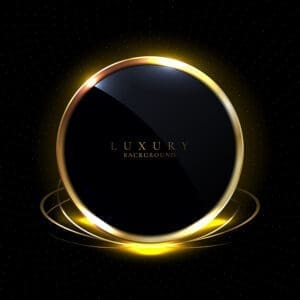The global hospitality industry has had a turbulent decade. The financial crisis of 2008 depressed international travel, followed by a surge in terrorism, some of it directed against hotels, forced down occupancy in several countries. When added to the rise of peer-to-peer services such as Airbnb and new start-ups like HomeAway and Tripping, occupancy rates have fluctuated, with average room rates stagnating and, in some cases, dropping relative to inflation in some countries.

According to hotel industry consultant STR, there are around 184,299 hotels comprising 16,966,280 million rooms around the world in the first quarter of 2018. That number of rooms represents a 17.7% increase over the last 10 years. Asia Pacific continues to be the key growth region for the industry at large with the highest hotel occupancy rates which, according to STR, have risen from 3.1% to 70.1% with an average daily rate (ADR) growth of +0.9% (US$97.39).
Improving in-room entertainment
For an industry worth around $500 billion globally, occupancy rates are part of a wider move towards higher earning per guest through additional upsell services and increased brand loyalty. One of the underlying trends is to deliver a Ôbetter-than-home’ guest experience. Research about what hoteliers and guests deem important in a hotel’s in-room entertainment offerings highlights the growing importance of the TV as a hub to higher-value additional sales and services to deliver better guest experience Ð and ultimately more profitability.
The Ò2016 In-Room Entertainment Preference StudyÓ, Êconducted by the Consultancy at Pointer’s Ridge, found that searchable, Interactive Program Guides (IPG), Over the Top (OTT) Services (Netflix, Amazon Prime Video, Hulu etc.), Screencasting, Group Messaging, and the ability to Pause Live TV topped the list of in-room entertainment services. By deploying more interactive video services and enabling guests to access complementary options directly via the TV screen itself, hoteliers can ensure they do deliver the kind of service guests actually want.
Millennials want media
Surprisingly, the study found that 57.4% of guests are attempting to connect their own devices to the in-room TV via a cable or streaming device. In addition, 62.1% of Millennials, 52.2% of Gen X and 17.2% of Boomers are using their own devices to stream media while at the hotel.
However, guests would prefer to watch streaming media via the hotel room TV with Millennials requiring this feature more than older guests. The survey found that 37% of Millennials would prefer to enter a passcode into the TV; 23.9 % of Millennials would prefer to use Chromecast, Roku or a similar device; 26.2% of Millennials would prefer to use an HDMI cable or the like; and 27.6% of Millennials would prefer to stream their media wirelessly to the TV.
In the last few years, hoteliers have reacted to this trend. According toÊHospitality Technology’sÊ2017 Customer Engagement Technology Study,Ê79% of hotels plan to have a comprehensive mobile experience in place for guests, while 62% plan to add or upgrade their Digital Signage platform, and 42% of guests said they want integration between their mobile phone and the in-room TV Ð all by the end of 2018.
Room to floor
The investment in more engaging in-room experiences has been most pronounced within higher end hotels. A great example of this trend is BAI Hotel Cebu, located in the Philippines. The hotel recently reinforced its commitment to modernity by completing an IRE upgrade that created a branded TV interface with access to 60 local and international TV channels. The system enables the hotel to use a single platform to offer a unique guest experience that is both modern and interactive.
Other hotels are going further still as they aim to turn the in-room screen into a single platform for all IP-based communications. These include on-screen services such as mailbox messaging, room service, laundry services and luggage pick-up. Just like TV, hotel guests want to be able to access these services from a mobile device. In the Asia-Pacific, mobile is growing to one of the primary ways to browse the Internet and make payments, and hoteliers can maximise revenues by ensuring all of their services can be easily purchased from mobile devices.
The use of video and signage to improve hospitality and leisure customer experience is also extending past hotel guest rooms and into casinos and resorts. For example, Okada Manila is a premium casino resort at the heart of the city’s fast-rising Entertainment district. Okada Manila has employed a system that enables the seamless distribution of casino promotions and jackpot information on each of the 3,000 electronic gaming machines, and on the 204 installed screens on the casino floor and in public spaces. The system ensures guests have access to relevant content, branding, wayfinding and messaging on the right machine and screen and uses a centrally-managed platform to better co-ordinate elements based on pre-scheduling.
In family resorts, video is being used to entertain children around the pool or in the bar with films and cartoons, providing parents with the opportunity to relax. Video and signage even offers hoteliers the opportunity to capitalise on bad weather, or when food and beverage areas are unavailable, through the promotion of movies and in-room services. This ensures guests remain informed and entertained wherever they are in the hotel.
With IP as the unifying factor for video, signage and guest systems across the hotel ecosystem, hoteliers are increasingly looking at ways to use unified networks and common technologies to reduce the complexity of deployment and deliver ongoing flexibility. Looking to the future, hoteliers are faced with growing supply, competition and a more informed, tech-savvy consumer; but by offering IP-based digital video technologies they can offer a Òbetter than homeÓ experience and a real competitive edge.
About the author
 Jamie Hind is Sales Director Asia Pacific at Exterity, where he is responsible for the management of all sales and channel operations in Australia, New Zealand and across Asia, driving regional growth and further cementing Exterity as an IP video and digital signage market leader.
Jamie Hind is Sales Director Asia Pacific at Exterity, where he is responsible for the management of all sales and channel operations in Australia, New Zealand and across Asia, driving regional growth and further cementing Exterity as an IP video and digital signage market leader.
Prior to joining Exterity, Jamie held management positions at Movielink and TriplePlay Services. Through opening up new reseller channels and vertical markets across the globe, and with the last 5 years spent living and working in Asia Pacific, he has also built a true understanding of different cultures, markets and people and what is expected of a strong technology partner.



















